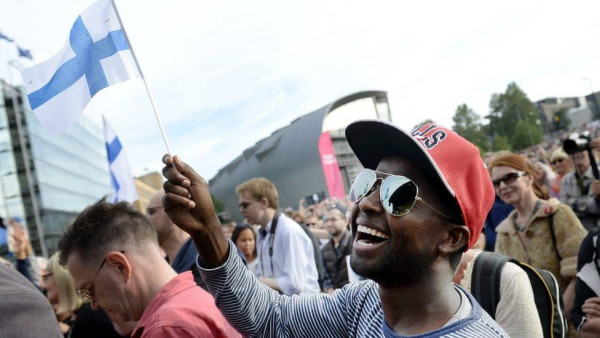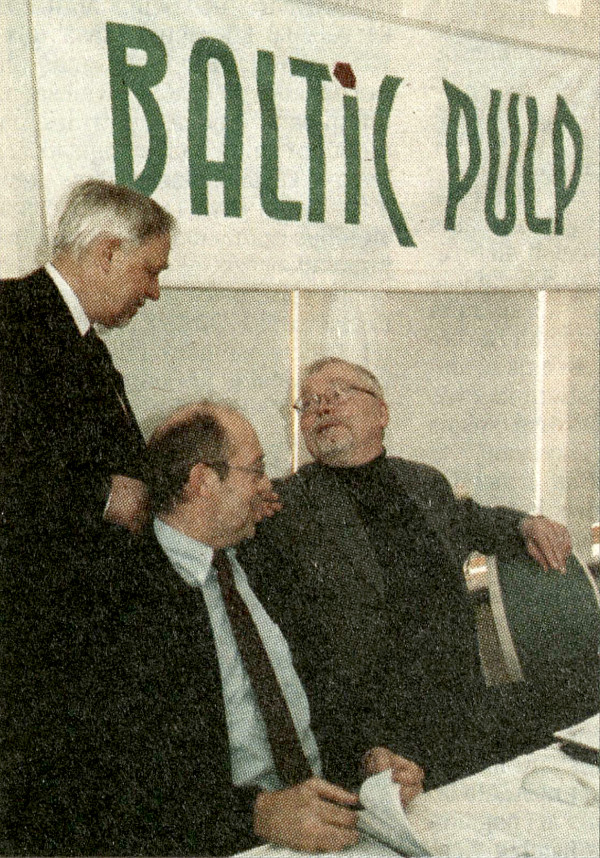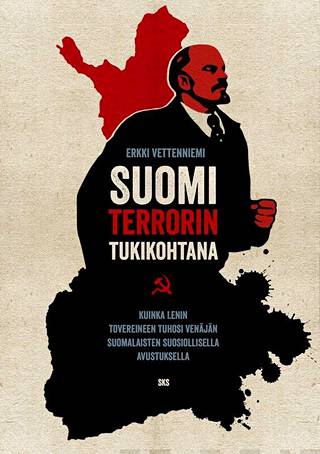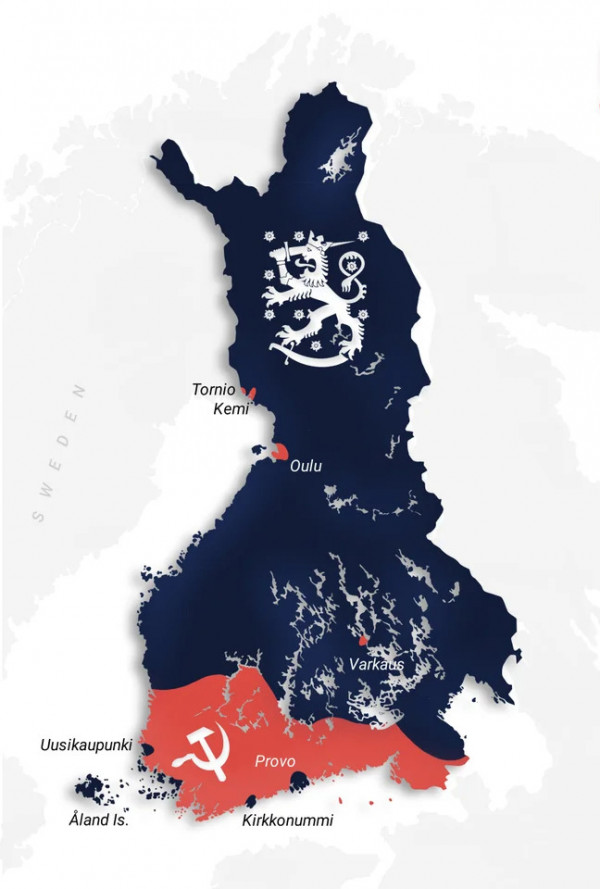104 years of Finland setting an example for Latvia
The Finns have always given Latvians reasons to envy and emulate them. This month, too, there is reason to recall that with the proclamation of their country on December 6, 1917, they were almost a full year ahead of Latvians, and the international recognition of their state even 2-3 years ahead of us. Russia recognized Finland as a country already on January 1, 1918.
In the minds of people living in Latvia today, the Finns like to throw back drinks, but there are some signs that the Finns also like to throw a curveball.
Already in Soviet times, they were known to sometimes throw pucks in the goal of the all-powerful Soviet Union hockey team. This knowledge is not what you would call extensive, but it was safe knowledge, because the Latvian population saw it with their own eyes, even if on television, through a gap made in the Iron Curtain. The restoration of the Republic of Latvia gave Latvia the right to have its own national hockey team, which is now trying to keep up with the Finns against a still strong Russia.
The Finns also throw back vodka much more often than they throw hockey pucks. Otherwise, they would not have, since the turn of the 1980s/1990s, filled several ferries day after day with several thousand passengers each to go from Helsinki to Tallinn to buy vodka produced in Finland and then exported. In Estonia, alcohol prices turned out to be so low, or in Finland so high, that it paid off for the Finns to buy alcohol abroad even when counting the ticket price for the trip abroad. There was even a time when Finns went to Valka, the alcohol capital of Latvia, to buy vodka because the Estonian state had started chasing the Finnish state and had raised the price of legal alcohol. Oh, alcohol is poison! But does the effect of this poison on Finns really become weaker in inverse proportion to the price of alcohol in Finland and in proportion to the distance from Finland at which the alcohol is bought? It is more likely that this is them throwing a curveball to fool themselves. Let us console ourselves with the conclusion that it is not we who are stupider than the Finns, but they who are more cunning, more slick, more hypocritical than we are. What exactly have they achieved with such a bouquet of qualities?
Even the rich are crying (dying out)
Of course, the Finns' achievements are great when expressed in terms of gross domestic product and when you compare the €42,677 per year per Finnish inhabitant in 2020 with the €15,525 per inhabitant in Latvia.
At the end of November this year, there were 5,549,599 people living in Finland. More than 5.5 million people is a lot compared to Latvia, where less than 1.9 million people remain.
The comparison is also in Finland's favor in terms of population changes since the establishment of the Latvian and Finnish states. On February 14, 1925, the magazine Valsts Darbinieku Balss (Voice of State Employees) published a "Report on the First Foreign Excursion of Latvian State Employees", which went exactly to Finland. Our officials arrived with the news that "in the Finnish nation of three million there are only about 400,000 speakers of other languages, who mainly speak Swedish, while high society also speaks German". The Central Statistical Office's database for 1925 gives Latvia a population of just over 1.8 million. If we are to believe the precise population changes in Latvia, the population here has increased by 48,418 people in the same period, while in Finland the population has increased by 1.5 million people. This change is not linear in either Latvia or Finland, because both countries were caught up in the Second World War, with its consequences, many of which affected demographic indicators, while demographic change affected all other factors. The changes are continuing, but their midpoint is clearly a sad one for Latvia.

It does not improve the situation for Latvia, but it is still worth noting that the Finns are also on the road to extinction. In the first eleven months of this year, there were five thousand fewer births than deaths. Extinction is extinction, albeit at a much slower rate than in Latvia, where twice as many people (around 10,000 a year) are disappearing year after year from a population that is almost three times smaller.
The difference between Latvia and Finland is that the total population there has been boosted again this year by a net inflow of 20,000 newcomers. Last year's immigrants and emigrants alike have already been sorted by country of origin and destination. Last year, almost 33,000 people entered Finland and 15,000 left. Africa and Russia gave Finland 2,300 people last year, taking back 400-500 each. 405 people moved from Latvia to Finland and 48 came to Latvia. Estonians, on the other hand, are moving back and forth in large numbers. For Finland, +1.5 thousand and -1.3 thousand of them at the same time last year.
Immigration has brought around 400,000 people to Finland since 1990.
Latvia disliked the Finnish project

Finland announced its economic power to Latvia in the last years of the last century with a proposal to build and start up a pulp mill here, worth half a billion lats at the time. This was in the years when Latvia was able to raise one and a half billion lats in its annual budget. The offer to increase the amount of money circulating in Latvia by leaps and bounds seemed almost irresistible. In March 2000, the then Minister of Agriculture, Aigars Kalvītis, signed an agreement, authorized by the government of Andris Šķēle, to set up company Baltic Pulp together with the Finns. However, no such company exists in Latvia. It is also still unclear what exactly foiled the project.
Latvian and Finnish representatives exchanged hints about the greed of the other side. The Finns allegedly wanted the Latvian state to commit to supplying their company with a lot of wood at a low price. The Latvian side decided that it was fine as it was then, without any pulp mill. Because the decision was made by those who were already doing well as owners or managers of companies transporting millions of cubic meters of wood to Latvian ports and on to Finnish (all Scandinavian) ports for processing into pulp, paper and other products. Then some of it can be brought back. The Finns could not or would not compensate their retreat from the not grandiose but still very pleasant sources of money in the business of transporting goods, storage, financing, accounting services, etc.
Officially, the alarm was raised about a possible threat to Latvian nature and in particular to the Daugava River, as the company's location was chosen as Ozolsala in the Krustpils municipality. The Finns explained that their pulp mills, and modern pulp mills in general, did not cause any damage to nature, otherwise, Scandinavia, with several dozen large pulp mills, would have turned into an uninhabitable area for humans. The project promoter, Metsaliitto Group, invited Latvians to visit one of its companies by the lake. There, they organized activities such as swimming in the lake, i.e. into the factory effluent, after a Finnish sauna, and frying and eating fish caught in the lake at a dinner in the sauna. No health problems were reported by any of the participants, either on the spot or later in connection with their visit to Finland.
This time the story is not about ecology, but about Finnish-Russian relations. Does it ever happen that a corner of the forest that extends into Russian territory is also cut down for Finnish pulp? The Finns at the social event confirmed that this does happen. What if the Russians notice? Then the Finns pull out their Finlandia flasks, which no Finn would go into the forest without. The Russians immediately pull out theirs. What would be a near-war threatening event for other nations, on the Finnish-Russian border escalates into a festival of friendship between nations. If the Finns said so, one could only believe it. But that is all the more reason to marvel at the turn in relations between the Finns and the Russians, whose shared past over the last 100 years has seen not one but four wars between them, and the brutality they unleashed, precisely on the basis of nationality.
Red Finns are redder than Red Latvians
Finland's current demographic data warn of the Finns being on the road to Western European self-destruction, the leaving of which would be an even greater miracle than the Finns' repeated escape from the Soviet Socialist Republic, including from the honor or dishonor of co-founding the Union of Soviet Socialist Republics. That, too, was a miracle for which it is only after it has happened that it is possible to recognize a series of natural causes. Other factors should have prevailed and kept Finland as a lodgment area for the expansion of communism.

The story of Finland as such a lodgment area is told in a book published in Finland in 2019 by Erkki Vettenniemi, which says it all in its title "Terror Base Finland: how Lenin and his comrades destroyed Russia with the help of the Finns" (Suomi terrorin tukikohtana - kuinka Lenin tovereineen tuhosi Venäjän suomalaisten suosiollisella avustuksella).
The "terror base Finland" should make fans of the Red Latvian Riflemen nervous, because the Finns are serious rivals to the Latvians on their laurels for their decisive role in the destruction of the Russian tsarist state. Vettenniemi's book will not come as a huge surprise to those who have also read even the Latvian-language writings of Russian Communist leader Vladimir Lenin (1870-1924), in the last volumes of which Finnish surnames among those mentioned are conspicuously frequent.
Lenin's ability to calculate or otherwise perceive the best political combinations for him was undoubtable. If he thought it right to recognize Finnish independence practically immediately after it was declared, then that was the most plausible option for maintaining the communist regime. That is to say, to create a fallback country which to escape to if the situation became hopeless in Russia itself and in Petrograd in particular. It had been the practice since 1905 that revolutionaries (or terrorists or looters) could very easily enter the Grand Duchy of Finland which was a part of the Russian Empire, but Russian policemen had to stop at the border of the Grand Duchy and ask the Finnish policemen to take over the pursuit of the refugees. They, in turn, dared to ignore the demands coming from the capital of the Russian Empire for three different reasons. Firstly, the Social Democrats were indeed popular in Finland, in line with the fact that southern Finland had a developed industry with a corresponding mass of workers. Secondly, the Finnish nationalists supported the Russian socialists because they had correctly assessed their chances of destroying the Russian state. Thirdly, the bureaucrats in Helsingfors were in a fight with the bureaucrats in St Petersburg. Russian Prime Minister Pyotr Stolypin (1862-1911, in office from 1906) managed to bring the Finns to order for a while, but his vigorous actions were too much for many and he was assassinated. Lenin is said to have visited Finland 26 times between 1906 and 1907. Later he was forced to run away further afield but he returned in 1917. He waited in Finland from August to October for the right moment to appear in Petrograd and seize state power.
If they come from the forest, they are savages
Lenin rushed to recognize Finland's independence at the turn of the year 1917/1918 (December 18, 1917, in the old calendar) precisely because the old bourgeois government, based on fair parliamentary elections, was still in power. Everything was in place for its overthrow. Lenin's associate, Joseph Stalin (1878-1953), had spoken at the Finnish Social Democratic Workers' Party Congress on November 14, had given a promise to supply the party with arms and had brought back a promise to overthrow the government. But this was not to be rushed, because Finland was not recognized by Sweden, Greece, Germany, Norway, Denmark and Switzerland in the first week of 1918, i.e., a month after the proclamation; France suspended the recognition procedure in protest against Finland's submission to the Germans' plans to install the Hohenzollern dynasty in Finland, just as Lenin wanted to install the Bolsheviks there. By comparison, the Republic of Latvia, proclaimed on November 18, 1918, received recognition from Russia in the form of a peace treaty on August 11, 1920, and recognition from the Entente on January 26, 1921.
Lenin, therefore, wanted to take over not a self-proclaimed territory but a real state among other states, which could no longer withdraw its recognition of Finland depending on how the Finns conducted their internal affairs. On January 27, 1918, the Social Democrats raised a red flag over Helsinki. They had obtained arms from Russia and took power in Southern Finland within a few days. The Finnish government could only counter them with a retired Russian army general, Carl Gustaf Mannerheim (1867-1951), as commander-in-chief of the still non-existent army.

The most extreme Russian explanation for Mannerheim's victory is that in the wild north of Finland he gathered savages (think of the characters from the fairy tale of the Snow Queen) who were told to kill anyone who was not Finnish - anyone who could not count to three in Finnish. That was about the amount of Finnish that C.G. Mannerheim, who had only begun to learn the language as a Finnish army commander, knew at the time. With such an army, Mannerheim not only defeated the Red Finns in a few months, but also attacked Russia four times in 1918, 1920, 1939 and 1941. The friendship between the Russians and the Finns, built on the basis of the wars, is worth an even more in-depth analysis.
